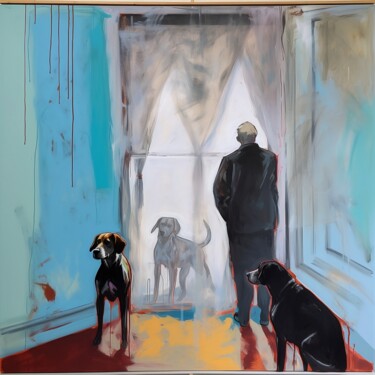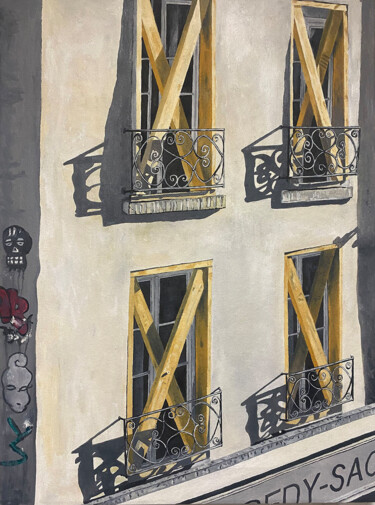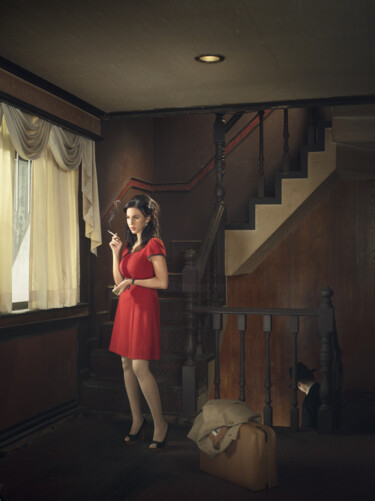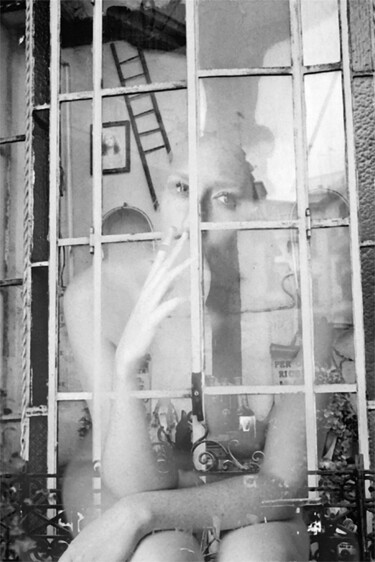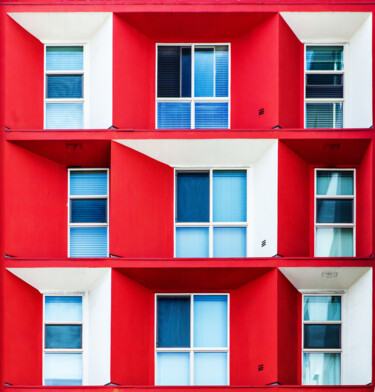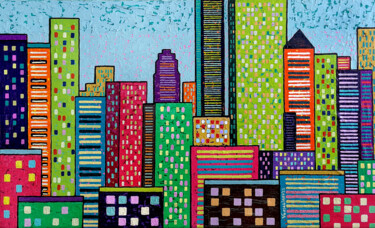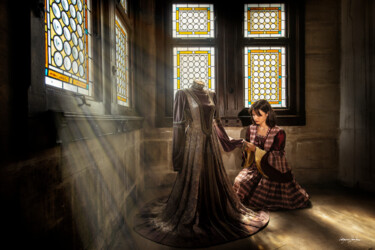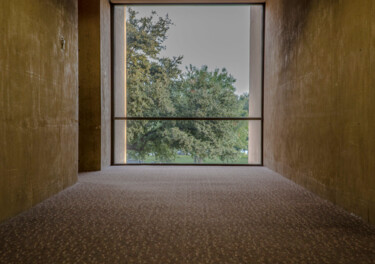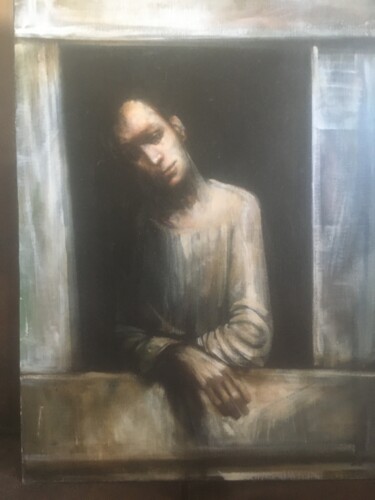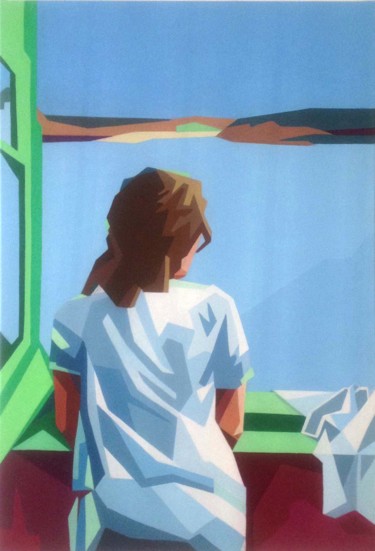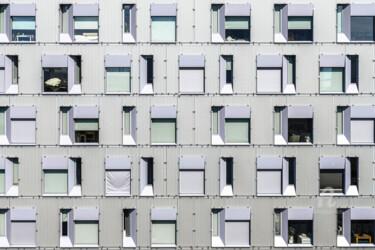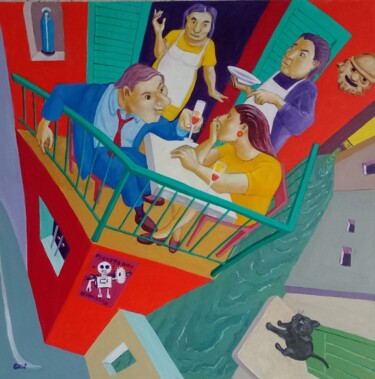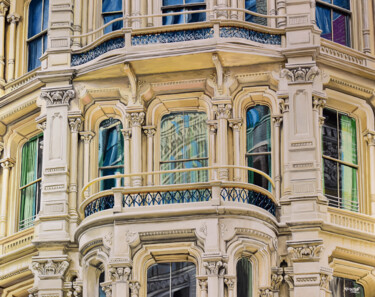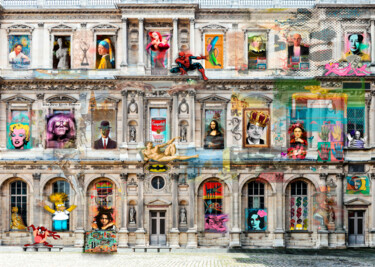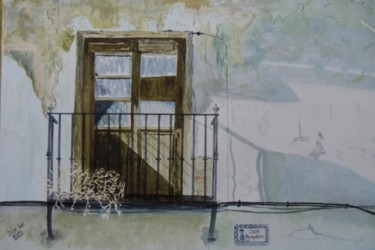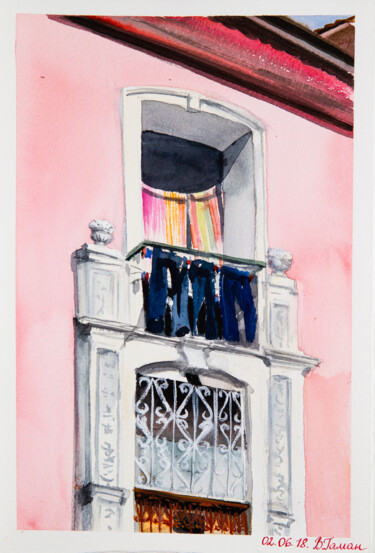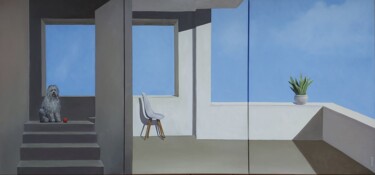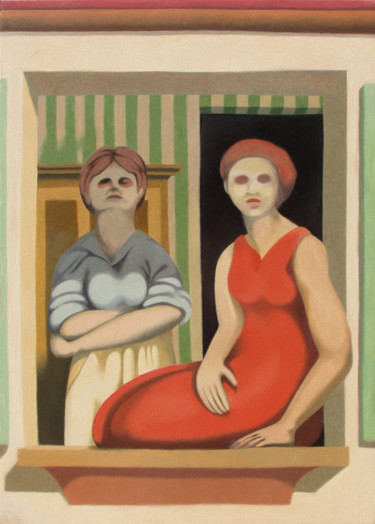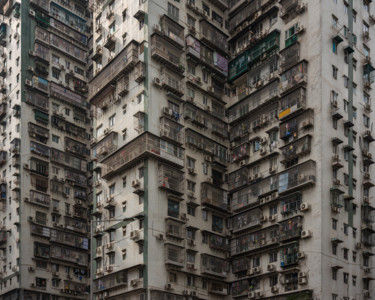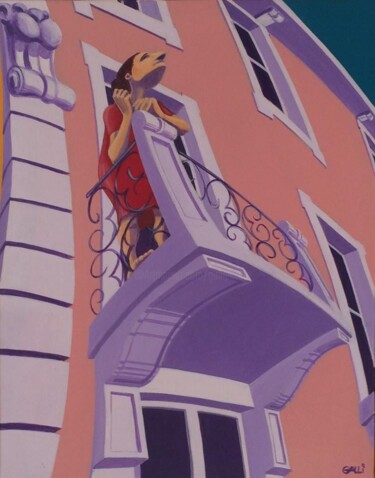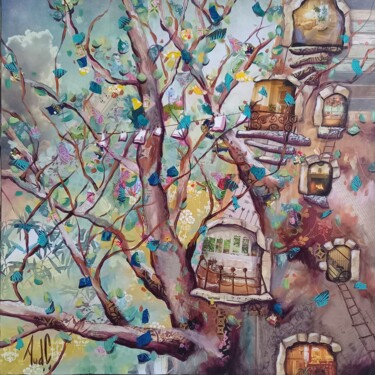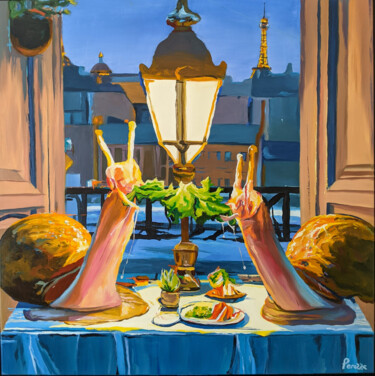From Persia to Francisco Goya
Perhaps even those who avidly enjoy the sun, which comes to illuminate the balcony of their home every day, remain unaware of the historical origins of this of window fitted with a parapet, conceived with both decorative and practical function. Balconies originated in the Far East, specifically in Persia and Egypt, places where they also sometimes hosted specific celebratory activities. The situation turns out to be more similar to today if we think instead of the Greek world, where balconies, built even in private homes, were subject to specific rules and laws, going as far as the taxation of their presence. Such an example we find similarly in the Roman world, so much so that the popularity of the balcony was celebrated, as well as documented, in Pompeian painting. Subsequently, if in the Medieval age the balcony was erected on frames with one or more recourses of unremarkable corbels, during the Renaissance it became pure aesthetic, as well as strictly functional, works of art, culminating in the example of those in Palazzo Pandolfini (Florence) by Raphael! Although over the centuries such painterly shrewdness has gradually waned, the pictorial medium offers us the opportunity to learn about the characteristics, as well as the modes of enjoyment, of balconies between the nineteenth and twentieth centuries. It is precisely through the analysis of the works of such masters as Pierre Albert Marquet, Francisco Goya, Édouard Manet, Bethe Morisot, Gustave Caillebotte and Umberto Boccioni that the subject matter in question will be progressively analyzed. In fact, the order in which I have presented the artists is functional to the construction of a growing narrative, aimed at emphasizing a continuous increase in "complexity" in dealing with the balcony.
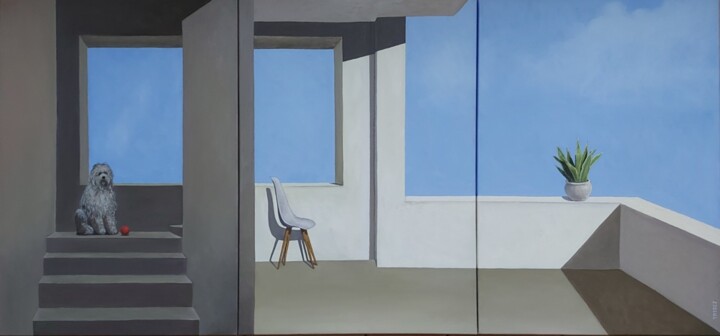 PLAY WITH ME (2022)Painting by Tatiana Popova
PLAY WITH ME (2022)Painting by Tatiana Popova
 DER BALKON (2019)Painting by Max Leonhard
DER BALKON (2019)Painting by Max Leonhard
Art on the balcony: "simple" and "complex" works
Quickly describing the first artist, French painter Pierre-Albert Marquet painted, in 1945, View from a Balcony, an oil painting aimed at immortalizing a balcony devoid of human presences, having the intention of suggesting that the viewer, or the performer of the masterpiece himself, is still inside the house. From the latter space, railing and flower pot aside, it is possible to see a vast expanse of houses and trees, culminating in the immensity of the sea. We have already reached the second artist, namely Goya, who made the pictorial interpretation of the same subject more complex, because he added the human figure to it, which he captured in a frontal perspective, catching the balcony from its parapet. I am talking about Majas on a Balcony, a work of about 1800-1810, which immortalizes two well-dressed young women as, seated behind the balustrade of a balcony, they are guarded by two discreet men, focused on being present to the shadows cast by the female figures. Returning to the composition, it is decidedly innovative in that the balcony and the picture plane overlap, something that impressed even Manet, a master who took up this scheme for his later The Balcony (1832-1883). However, the French painter depicts a very personal scene of bourgeois life, which he enlivens by immortalizing the features of some of his friends, among them, the painter Berthe Morisot, who appears seated in the foreground. Despite what the characters could actually observe from their positions, they appear somewhat impassive and motionless, as if caught up in inner reasoning, surely more important and heartfelt. Such a view, despite making clear reference to Goya, was not understood in the painter's time, perhaps because, in addition to perspective and subjects, his flowers were unusually more carefully finished than the painting's protagonists themselves. Returning to Berthe Morisot, she is instead the creator of Woman and Child on a Balcony (1872), another example of the theme in question, in which the point of view changes again, catching the protagonists from an angular perspective, aimed at presenting the balcony almost horizontally and the female protagonist in profile, while she is intent on observing a cityscape. Returning to the French masters, Caillebotte is the creator of Man on a Balcony (1880), a work that is reminiscent of Morisot's just-described point of view, though caught from a higher position, intended to allow us also to contemplate the street below, which the man lends himself to observe. The whole is summed up, in a somewhat "minimalist" manner, in View Seen Through a Balcony, a masterpiece by the same painter that depicts only the line of a balcony, through which parts of an urban landscape can be glimpsed, which, complete with a horse-drawn carriage, is arranged behind the metal. Apparently, Caillebotte painted this view from his Paris balcony in 1880, giving exclusive say to the cast-iron curls of the latter, aimed at forming a decorative motif that fills the picture plane, conceived near Boulevard Hausmann. So if we have now seen the balcony superimposed on the landscape, Boccioni provides us with an almost opposite view, in that, in his The Street Enters the House (1911), it is what is outside the balcony that imposes itself on it, as a kind of real contamination between the work's exterior and interior settings. Briefly describing the masterpiece, it shows a female figure with her back turned, leaning against a balcony located on Via Adige in Milan, a point from which the view opens onto a dense series of buildings and streets, whose strong colors give the painting a powerful emotional charge. Returning instead to the discussion of the contamination of spaces, I refer to the clear words of the painter himself: "The dominant sensation is that which can be had by opening a window: all life, the noises of the street, burst in simultaneously as the movement and reality of the objects outside. The painter must not limit himself to what he sees in the window frame, as a simple photographer would, but reproduces what he can see outside, in every direction, from the balcony." Moreover, to the latter I want to add part of the text given in the Technical Manifesto of Futurist Painting (April 1910): "Our bodies enter the couches on which we sit, and the couches enter us, just as the passing streetcar enters the houses, which in turn are thrown onto the streetcar and amalgamated with it." Finally, we return to talk about balconies in contemporary art, through the point of view of Artmajeur artists Iryna Kastsova, Joana Bisquert Mari and Stefano Galli.
 MASS ARCHITECTURE (2014)Photography by Pierre Leccia
MASS ARCHITECTURE (2014)Photography by Pierre Leccia
 NICE. AZURE COAST. (2023)Painting by Iryna Kastsova
NICE. AZURE COAST. (2023)Painting by Iryna Kastsova
Nice. French Riviera by Iryna Kastsova
I start by describing what I see in the painting and then add information from the title and the words expressed about it by the painter. In the foreground of the stand we find flowering plants arranged, stretching from right to left, where part of a taller building also appears. In the distance the idyllic vision of a coastline, exploited in its beauty, that is, in its inhabited hills and the copious boats that populate the sea, is revealed. Did you see that I am not talking about the balcony? Because it is the artist herself who reveals where she executed her landscape from, just as she tells us precisely where it is located: "Nice is the capital of the Alpes-Maritimes department on the French Riviera, situated on the pebbly beaches of the Bay of Angels. A sapphire-blue sky above soaring-roofed houses with sunny yellow ochre walls, green shutters and pierced balconies built in the 16th-17th centuries; narrow streets, arches, squares with arcades, restaurants and pizzerias, small stores scented with herbs... Impressionism." So returning to the painting for a moment, I may now actually be able to make out a small part of the balcony parapet, which appears resigned at the bottom right of the support. Again referring to the artist's words, I agree that the work is indeed the result of a particular interpretation of the stylistic features of Impressionism, which, now more vivid in color, may also have looked to Post-Impressionism, if not to the example of the Fauves.
 EL BALCÓN (2023)Painting by Joana Bisquert Mari
EL BALCÓN (2023)Painting by Joana Bisquert Mari
The balcony by Joana Bisquert Mari
The painter positioned himself in the living room in order to paint an interior, which is enriched by the culminating and luminous presence of a balcony, facing to show the roofs of neighboring houses, as well as an immense and vast sky, ready to come to life above the sea. This last image captures the attention of the protagonist of the work herself, who, probably just awake at dawn, and perhaps still wearing light pajamas, forgets, entranced, what other activities she should be doing. The artist states that he conceived the above starting from the reality of an interior, later drawing inspiration from the examples of Danish masters of the 19th century who were experts in this genre, such as Hammershoi, Holsoi, and Ilsted, to which he also added the influence of Hopper. All these models served to achieve a single goal: to attempt to paint the silence, the tranquility of a morning spent in the relaxing domestic environment, always shielded from what could, on the outside, either delight or bring despair. Finally, regarding the painter, Joana Bisquert Marí is a Spanish artist of Alicante origin, whose main figurative focus is to capture the many identities of light, creating contrasts, luminous play, shadows, and illuminated nights. All this often generates highly intimate and personal works, sometimes aimed at revealing the historical past of Spain, which occasionally emerges to remind us of the artist's cultural background.
 LA TRATTORIA DEL PICCOLO BALCONE (2022)Painting by Stefano Galli
LA TRATTORIA DEL PICCOLO BALCONE (2022)Painting by Stefano Galli
The Trattoria of the Small Balcony by Stefano Galli
The viewpoint from which Galli captured a balcony, where a couple comfortably seated at a table awaits their courses, certainly served by the two characters in aprons, may perhaps be traced back to the previous shot of a drone, capable of flying to be suspended in front of the aforementioned destination. Hypotheses aside, the Italian artist created the work in question inspired by an event in his own life, as he used to go to the restaurant depicted with an ex-girlfriend, with whom he often enjoyed sipping wine. The love story ended with an ironic comment that Galli directed at her, an artist clumsily ready to criticize her culinary skills in front of friends and family. The painter also tells us how, after the breakup, she kept the cat, which Stefano still longs for in its furry cuddles. However, of all this love story, the painter retains an eternal and sweet memory: those snapshots of beautiful moments spent at the trattoria with the woman who no longer loves him. Speaking of Galli, his painting is strongly influenced by futurism, metaphysics, and surrealism, as well as the world of comics. In fact, his art is dedicated to telling particular and very personal themes, which, as in the case of The Trattoria of the Small Balcony, could certainly be accompanied by captions from the artist's own stories.

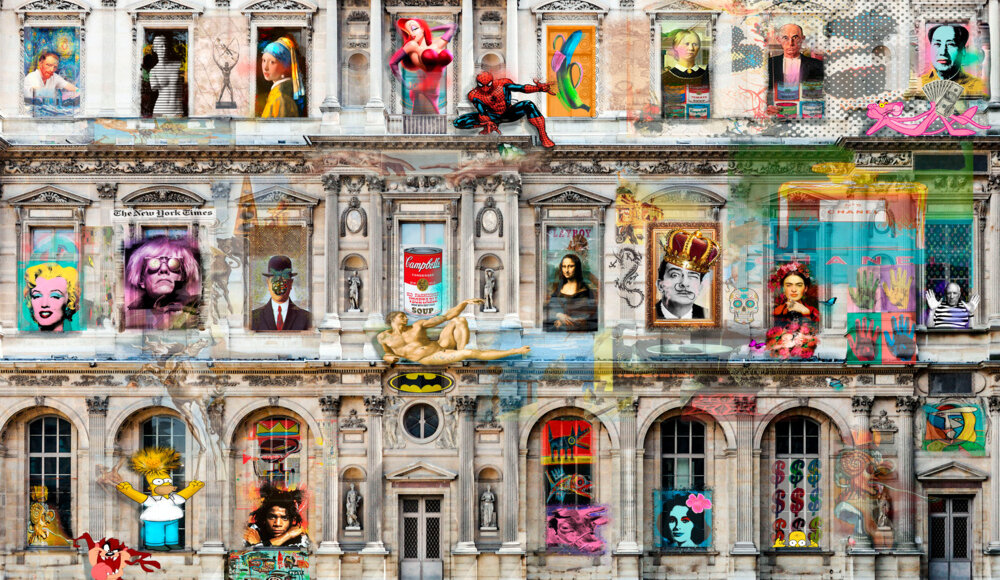
 Olimpia Gaia Martinelli
Olimpia Gaia Martinelli
